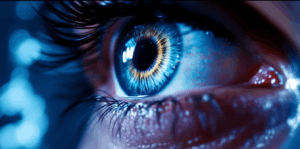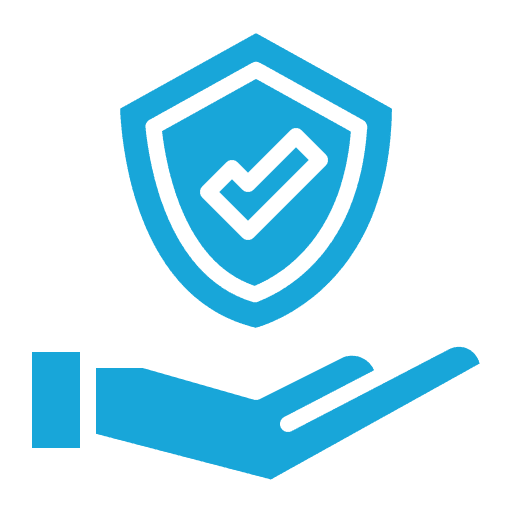
Schizophrenia: Understanding the Mental Health Condition That Affects 1% of the Population
Key Takeaways
- Schizophrenia is a treatable psychotic illness involving positive, negative, and cognitive symptoms that disrupt daily life.
- Early adulthood is the most common onset period, making awareness and early diagnosis critical.
- Antipsychotic drugs combined with psychosocial interventions remain the most effective strategies for treating schizophrenia.
- Genetic and environmental factors both contribute, but early recognition reduces long-term disability.
- With proper care, people struggling with schizophrenia can experience significant improvement and achieve meaningful recovery.
What Is Schizophrenia?
Schizophrenia is a chronic psychotic illness classified within the schizophrenia spectrum that affects brain development, thought processes, emotions, and behavior. It is a serious mental illness involving distorted perceptions of reality, often marked by hallucinations, delusions, disorganized speech, and catatonic behavior.
According to the Diagnostic and Statistical Manual of Mental Disorders (DSM-5) published by the American Psychiatric Association, diagnosing schizophrenia requires at least six months of symptoms, including at least one month of active psychotic symptoms, and evidence of clinically significant impairment in daily functioning.
Schizophrenia affects about 1% of the global population, usually emerging in early adulthood, and is associated with elevated risks of cardiovascular disease, substance abuse, and reduced life expectancy. Early diagnosis and comprehensive treatment are essential to prevent worsening of symptoms and improve recovery outcomes.
Symptoms of Schizophrenia: Positive, Negative, and Cognitive
Symptoms of schizophrenia are grouped into positive symptoms, negative symptoms, and cognitive symptoms, each affecting mental health, daily life, and social or occupational functioning. People with schizophrenia often experience overlapping symptoms that disrupt relationships, employment, and independent living.
Positive Symptoms (additional behaviors not normally present)
Positive psychotic symptoms are the most recognizable signs of this mental illness because they reflect an excess or distortion of normal functioning. They include:
- Hallucinations (auditory, visual, or tactile)
- Delusions (false beliefs resistant to contrary evidence, as seen in schizophrenia or delusional disorder)
- Disorganized speech or disorganized thinking, which may cause difficulty communicating or following conversations
- Grossly disorganized behavior or abnormal motor behavior, including unpredictable movements or catatonic behavior
These symptoms reflect disruptions in brain chemistry and may worsen without early treatment or ongoing maintenance therapy.
Negative Symptoms (reductions or losses of normal functioning)
Negative symptoms represent deficits that reduce emotional and social abilities, often contributing to long-term disability and impaired occupational functioning. They include:
- Flat affect (limited emotional expression)
- Social withdrawal and lack of motivation, often leading to loss of recreational or occupational activities
- Anhedonia, or reduced ability to feel pleasure
- Decreased speech output, sometimes tied to broader cognitive deficits
The phrase “catatonic behavior negative symptoms” highlights how immobility, mutism, or repetitive movements can overlap with emotional and social impairments in schizophrenia.
Cognitive Symptoms (thinking and memory challenges)
Cognitive impairments are often less visible but have the greatest impact on everyday life and independence. They include:
- Poor concentration and working memory deficits
- Difficulty processing new information and learning
- Challenges with executive functioning, decision-making, and problem-solving
These cognitive symptoms of schizophrenia strongly predict disability in work, school, and independent living, making them a major focus of modern treatment methods such as family interventions and psychosocial interventions.
Risk Factors and Causes of Schizophrenia
Schizophrenia develops through a mix of genetic and environmental factors, brain development abnormalities, and psychosocial stressors. While the exact cause is unknown, research highlights several major risk factors:
- Genetic factors – a family history of schizophrenia or other mental disorders increases risk
- Brain development issues – abnormal brain chemistry, brain lesions, or prenatal complications that disrupt neural connectivity
- Infectious diseases – certain prenatal or early childhood infections that affect the brain
- Environmental factors – urban upbringing, childhood trauma, or substance abuse (particularly cannabis in adolescence)
- Early adulthood stressors – the typical period when developing schizophrenia symptoms first appear (earlier onset in men, later in women)
Evidence suggests that these risk factors disrupt dopamine and glutamate systems, triggering positive psychotic symptoms (hallucinations, delusions) as well as negative symptoms like social withdrawal. Without treatment from qualified mental health professionals, untreated psychosis often worsens, leading to severe disability.
Schizophrenia Spectrum and Related Disorders
Schizophrenia is part of a larger schizophrenia spectrum of psychotic illnesses, as defined in the Diagnostic and Statistical Manual of Mental Disorders (DSM-5) published by the American Psychiatric Association. This spectrum includes related conditions that share overlapping features:
- Brief psychotic disorder – acute onset of psychotic symptoms lasting less than 1 month, often resolving with treatment
- Schizophreniform disorder – symptoms of schizophrenia lasting 1–6 months
- Schizoaffective disorder – schizophrenia symptoms plus major mood episodes, resembling bipolar disorder or depression
- Delusional disorder – persistent delusions without other hallmark psychotic symptoms
- Schizotypal personality disorder – eccentric behaviors, unusual beliefs, and mild psychotic features without full schizophrenia
Understanding these distinctions allows mental health professionals to provide accurate diagnoses and create individualized treatment plans. Family members, caregivers, and organizations like Mental Health America and the Substance Abuse and Mental Health Services Administration (SAMHSA) play a vital role in connecting people with schizophrenia to appropriate mental health services, supporting recovery, and improving quality of life.
Diagnosing Schizophrenia: DSM-5 Criteria
According to the DSM-5, diagnosing schizophrenia requires:
- At least two of five core symptoms (delusions, hallucinations, disorganized speech, disorganized/catatonic behavior, negative symptoms) for one month
- Continuous disturbance for at least six months
- Clinically significant impairment in work, school, relationships, or social, occupational, or recreational activities
- Symptoms not better explained by other mental disorders or substance-induced psychosis
Early and accurate diagnosis is essential to initiate treatment before permanent functional decline occurs.
Treating Schizophrenia: Medications and Psychosocial Interventions
Treating schizophrenia requires a combination of antipsychotic medications and psychosocial interventions.
Antipsychotic Medications
- First-generation antipsychotic drugs: Primarily reduce positive symptoms but may cause motor side effects
- Second-generation antipsychotic medications: Broader efficacy across positive and negative symptoms with different risk profiles
- Treatment-resistant schizophrenia: Clozapine is often prescribed when other medications fail
- Regular monitoring is essential to manage metabolic side effects, including weight gain and increased cardiovascular disease risk
Psychosocial Interventions
- Cognitive Behavioral Therapy (CBT) tailored for psychosis
- Family education and therapy to reduce relapse risk
- Social skills training to improve daily life and relationships
- Supported employment and vocational rehabilitation
- Peer support and community-based programs
By combining medication with psychosocial interventions, many patients experience significant improvement in symptoms, functionality, and quality of life.
Schizophrenia Symptoms-to-Treatment Table
| Symptom Category | Specific Symptoms | Primary Treatments | Additional Supports |
|---|---|---|---|
| Positive Symptoms (excess/additional behaviors) | Hallucinations, delusions, disorganized speech, paranoid thoughts | Antipsychotic drugs (first- and second-generation) to reduce dopamine activity | CBT for psychosis, family therapy, crisis stabilization |
| Negative Symptoms (reductions in normal functions) | Flat affect, social withdrawal, lack of motivation, catatonic behavior negative symptoms | Second-generation antipsychotic medications, sometimes antidepressants | Social skills training, occupational therapy, peer support groups |
| Cognitive Symptoms | Poor concentration, memory problems, difficulty with executive functioning | Limited response to medication, but cognitive remediation therapies are effective | Supported employment, problem-solving training, psychosocial rehabilitation |
| Acute Onset Psychosis | Sudden hallucinations, paranoia, agitation | Immediate antipsychotic intervention, possible inpatient stabilization | Family involvement, brief psychotic disorder protocols if <1 month |
| Treatment-Resistant Symptoms | Persistent delusions or hallucinations despite standard meds | Clozapine (gold standard for treatment-resistant schizophrenia) | Coordinated specialty care, psychosocial interventions |
| Co-Occurring Disorders | Substance abuse, depression, anxiety, opioid use disorder | Integrated dual-diagnosis programs | Trauma-informed therapy, relapse prevention planning |
| Functional Impairments | Decline in work/school, inability to fulfill major role obligations | Multidisciplinary treatment team with individualized plans | Supported employment, vocational rehab, community resources |
| Catatonic Behavior | Immobility, mutism, repetitive movements | Benzodiazepines, electroconvulsive therapy (ECT) if severe | Behavioral activation therapies, structured routine |
Schizophrenia Treatment Pathway: From Diagnosis to Recovery
Step 1: Early Recognition & Diagnosis
- Identify symptoms of schizophrenia (hallucinations, delusions, disorganized speech, catatonic behavior, negative symptoms, cognitive decline).
- Conduct a psychiatric evaluation using DSM-5 diagnostic criteria from the American Psychiatric Association.
- Rule out other mental disorders, substance use, or brief psychotic disorder.
- Neuroimaging and lab tests may be used to exclude brain lesions, infectious diseases, or other medical causes.
Step 2: Acute Stabilization (First Episode or Relapse)
- Hospitalization may be required for safety if psychosis is severe or life-threatening.
- Antipsychotic medications (first- or second-generation) prescribed to manage hallucinations, delusions, and agitation.
- If treatment-resistant, clozapine is considered.
- Supportive care for alcohol withdrawal or co-occurring substance abuse.
Step 3: Comprehensive Treatment Plan
- Medication Management: Long-term antipsychotic drugs to maintain stability and prevent relapse.
- Psychosocial Interventions:
- Cognitive Behavioral Therapy (CBT) adapted for psychosis.
- Family education and therapy to reduce stress and improve support.
- Social skills training to rebuild daily functioning.
- Dual-Diagnosis Programs for individuals with co-occurring conditions (e.g., depression, opioid use disorder).
Step 4: Rehabilitation & Functional Recovery
- Cognitive remediation therapy for attention, memory, and executive functioning deficits.
- Supported employment and education programs to help patients return to work or school.
- Community resources and peer support groups (e.g., NAMI, psychosocial rehabilitation programs).
- Lifestyle interventions: nutrition, exercise, mindfulness, and cardiovascular disease risk management.
Step 5: Long-Term Maintenance & Relapse Prevention
- Regular psychiatric follow-ups to adjust medications and monitor side effects.
- Develop relapse prevention strategies:
- Identifying triggers (stress, substance use, medication non-compliance).
- Building coping skills for daily life challenges.
- Family involvement remains critical in reducing relapse risk.
- Encourage participation in support groups to maintain motivation and connection with others facing similar challenges.
Common Misconceptions About Schizophrenia
- “Schizophrenia equals violence” – False. People with schizophrenia are more likely to be victims of violence than perpetrators.
- “It means split personality” – False. That describes dissociative identity disorder, a separate condition.
- “Recovery is impossible” – False. With proper care, many individuals achieve stability, functional independence, and fulfilling lives.
Reducing stigma and treating schizophrenia as a medical condition—just like diabetes or heart disease—improves access to care and outcomes.
Real-Life Case Example: From Psychosis to Stability
A young man developed acute onset hallucinations and paranoia during his final year of college. Initially diagnosed with schizophreniform disorder, he began treatment with second-generation antipsychotics and cognitive behavioral therapy. Within six months, his diagnosis was updated to schizophrenia.
With medication adjustments, psychosocial support, and family involvement, he transitioned from full-time care to supported independent living. Today, he maintains employment, participates in peer support groups, and advocates for reducing stigma surrounding mental illness.
Take the Next Step Toward Healing with Legacy Healing Center
If you or a loved one is struggling with schizophrenia, another serious mental illness, or co-occurring substance use, Legacy Healing Center is here to help. Our premier luxury mental health treatment center in Ohio offers personalized care in a private, supportive environment designed to restore balance and hope.
For those facing dual diagnosis challenges—such as schizophrenia with substance abuse or other mental health disorders—our expert treatment team provides integrated, evidence-based therapies that address both conditions at once. From individual therapy and family interventions to advanced psychiatric care and holistic wellness services, Legacy delivers the most comprehensive support available.
📞 Call us today at (888) 534-2295 or verify your insurance here to begin your journey. Whether you need specialized mental health treatment in Ohio or compassionate dual diagnosis treatment nationwide, Legacy Healing Center gives you the care, privacy, and healing environment you deserve.
Frequently Asked
Questions about Schizophrenia
What are the first signs of schizophrenia?
Early symptoms include social withdrawal, unusual beliefs, disorganized speech, and perceptual disturbances like hearing voices.
Can schizophrenia be cured?
No permanent cure exists, but antipsychotic medications and psychosocial treatments can help patients achieve significant improvement and live independently.
Is schizophrenia genetic?
Yes. Genetics account for much of the risk, but environmental risk factors such as trauma or infection during pregnancy also contribute.
What’s the difference between schizophrenia and schizoaffective disorder?
Schizoaffective disorder combines schizophrenia symptoms with mood episodes, while schizophrenia primarily involves persistent psychotic features.
What other health risks do people with schizophrenia face?
They have higher rates of cardiovascular disease, metabolic conditions, and co-occurring substance abuse, which makes comprehensive care vital.












 Verify Insurance
Verify Insurance 